Final Fantasy: Final Symphony
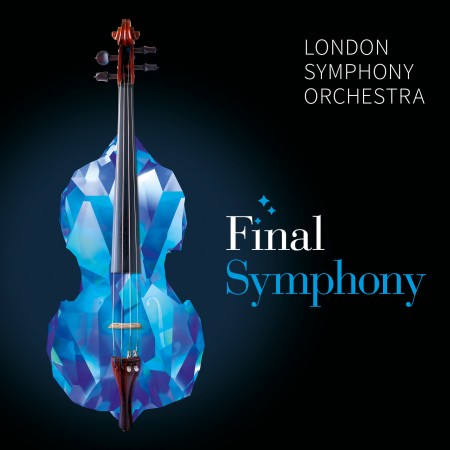 |
Album Title: Final Symphony |
| Record Label: X5 Music Group |
|
| Catalog No.: MSP-6710d |
|
| Release Date: February 23rd 2015 |
|
| Purchase: Download at iTunes |
Overview
One and a half years after the triumph of Final Symphony in Germany and at the Barbican Centre in London, what many fans have hoped for has happened: Final Symphony now has a recording to it’s name. Not just any old recording though, once again Thomas Böcker has taken advantage of the opportunity and fulfilled another lifelong dream not only of his own, but of Nobuo Uematsu’s too, that of recording the album in December last year at the world famous studio where The Beatles among others made their name, Abbey Road Studios (if you look closely I’m sure you’ll find where Nobuo Uematsu wrote his signature on the wall outside the studio, the trailer for the album also shows him walking across the zebra crossing that The Beatles made famous).
Needless to say, this is a landmark recording for many reasons, the main one being that this is the biggest video game music album recorded by the London Symphony Orchestra so far. Also, this music, when it was performed in 2013, was the LSO’s first foray into video game music, and they have taken on other projects since then such as recording the classical music for Fantasia: Music Evolved, and I’m sure we can look forward to more in the future. Since the concert’s premiere performances, new additions have been added to the scores have been added. These were first heard in the Tokyo and Tampere performances. Mostly small changes, although there are a couple of big additions which I will talk about below. This album has a high standard to live up to, set by previous concerts and albums from the team at Spielemusikkonzerte, and I look forward to hearing if it manages to do so. If you want to know more information about the intentions behind the arrangements and the stories being told then I encourage you to visit the Spielemusikkonzerte website and to read my report on the London performance from back in May 2013.
Body
The album opens with the overture specially composed for this programme, as has become tradition with these concerts and albums. This one is called “Circle within a Circle within a Circle” and, according to Jonne Valtonen, who composed this overture, the name means this: The harmony of the main theme, which is only couple of bars long, is stretched over the whole piece. So you have this short melody that keeps re-occurring inside augmenting itself (the whole harmony of the piece) and then you have those string runs that keep circling above them all. Hence the name. This can certainly be heard as the piece builds from the strings circling fast flurries of notes to the brass carrying the main melody to the ascending and descending sequences to the build ups pushing the piece on to the end. The orchestra suddenly stops and is interrupted by a train whistle to signify the end. This is probably my favourite overture that the team have composed so far as it is unpredictable and takes the listener on a ride, a great way to open the concert and the album.
We then move onto “Final Fantasy VI Symphonic Poem: Born with the Gift of Magic”. With this arrangement, Roger Wanamo aimed to retell the story of the first Final Fantasy game he ever played, as he experienced it. It’s interesting then that the piece opens with the opening motif from the “Opera Scene” as that’s about half way through the game, but it makes for a fitting opener musically. The playful motif, with “Terra’s Theme” played by the horn over the top, makes way for some of the darker musical motifs such as the Emperor’s theme. The pulsing strings in the background carry the piece through the atmospheric melodies and harmonies. The texture is perfect, the kind of texture that only powerful pipe organs could normally pull off, and it captures the sense of foreboding brilliantly. This transitions into Terra’s theme, with both themes interspersed with each other, creating an interesting sense of conflict.
We then move into the comical effects to suggest Kefka’s approaching. Once again, the laughing effect in the strings and woodwinds is wonderful, and the playful nature of the tune played on the bassoons and tuned percussion makes it even more intimidating in many ways, capturing the psychopathic Joker aspect of Kefka’s character. The heavy bass and unpredictable tempo of the following section further emphasizes this, and then the piece goes into full on cartoon villain music, they even turn the theme into a waltz later on, and it sounds glorious. The LSO have nailed everything in this from the individual solos and sectional playing right up to the big tutti sections, it’s all perfectly balanced and brilliantly contrasting. This dies down into the more magical pieces from the game, with the harp and celeste taking the lead backing other instruments interjecting with Terra’s theme while “Esper World” is played. The decision to slow this piece down works really well and captures the magic. The dynamics and gradual addition of instruments is what keeps this piece going. The piece then suddenly dies and the celeste re-introduces “Terra’s Theme”. The two themes merge together perfectly, and it is not always what you would expect harmonically.
The piece then builds, with the low strings cleverly interjecting Kefka’s theme until the whole orchestra crashes into all the battle themes, including the main “Dancing Mad” motif. The brass really shine in the main battle theme, with a fantastic trumpet solo from Phil Cobb and very strong trombone sectional, before the strings take over the tune. Together, the strings and the brass make this theme, “Battle to the Death” and “The Decisive Battle” sound more epic than they have ever sounded before. The piece then closed with a low string requiem section, which leads into a major chord with the Terra’s theme motif echoed by various instruments. We then get a full militaristic version of the piece. The decision to move this to the end of the poem was a smart one as it gives it a more definitive major ending and makes sense if this were a retelling of the story of Final Fantasy VI. This symphonic poem really knocks the music of Final Fantasy VI out of the park in the best rendition of the game’s music anyone could hope for, and it’s so good to have it recorded.
The next piece on the album is the “Final Fantasy X Piano Concerto”, put together by Masashi Hamauzu himself. Hamauzu sees the Final Fantasy series as a continuum instead of just separate stories with similarities, and his intention with this piece was to explore the music as a bigger overall vision. This really shines through in the arrangement, as it definitely feels like a complete work as opposed to a medley. Katharina Treutler takes centre stage as the piano soloist, taking the place of Benyamin Nuss who performed at the London concert. She opens the first movement, “Zanarkand”, with very jittery solo chords before the orchestra comes in and introduces some of the gorgeous harmonies that Final Fantasy X is so well known for, then the piano and orchestra really take off full speed ahead. The next section is very soloistic, with occasional instruments playing over the top or underneath the piano chords before the piano gets to take centre stage. Eventually, “Zanarkand” itself comes in full romantic mode, although the harmonies are never what you would expect. The tune itself at this point is not played fully, and it is given a chance to be explored in different ways. The build up was an effective preparation for the intense music to come. I really like the section where the tune of “Zanarkand” is played around the subtle “Besaid Island” motif. One of the changes since the London performance is that “Zanarkand” itself is played in it’s entirety, as after some intense moments, the orchestra are given the chance to play the main tune with the piano decorating around it. The tune is never played straight, keeping it unpredictable and interesting. I love the way the movement ends with the piano rising just like the Final Fantasy series “Prelude”.
The next movement “Inori” begins with a cadenza based on “Hum of the Fayth”, demonstrating Katharina Treutler’s impeccable ability to play floaty chords and interesting harmonies in a really engaging way. The orchestra comes in after that, giving the piano the chance to decorate. The orchestra and the piano work together perfectly, taking turns being the focus and being an accompanying voice. The mood changes a few minutes into the movement, becoming slightly quirky with the “Thunder Plains” theme. The piano and violin solo complement each other brilliantly, and this section gives Treutler a chance to show off. The orchestral tutti’s can be quite powerful, but they still fit with the overall feel of the movement. Since the London performance, “The Sending” has been added to this movement, a worthy addition that adds to the calm parts of the movement. This builds and builds with a very effective shrieking clarinet until it launches straight into the last movement, “Kessen”. This movement focuses on the battle themes and other action scenes of the game. It all kicks off in this movement and never lets up, from the pumping rhythms of “Assault!!” and “Run!!” to an interesting section in 3 time. This movement boasts some of the best piano playing I have ever heard on any video game music album. The piece then calms down before launching again into the climax. The various orchestral hits made my headphones go nuts, just a forewarning that they are incredibly powerful. This piano concerto is another triumph, with some of the best piano playing ever heard on any video game music album, perfectly complimented by the LSO.
After the concerto comes the team’s rendition of “Suteki Da Ne”, an encore which was added to the Tampere performance, performed by Katharina Treutler. The song is clearly well suited to piano and is performed beautifully in an incredibly elaborate arrangement which is an emotional journey all in itself. Even if you are not familiar with the music of the games in question, there is so much here that even a dedicated fan of the game will have a lot to learn about the music contained within these pieces. As conductor Eckehard Stier said “there is a lot to discover, and I’m discovering still, new colours, new elements”. It will require multiple listens to notice all the small touches the team have put into this journey, and the love and care that has gone into its creation is obvious right from the start.
The final part of the album and concert (excluding the encores) is the “Final Fantasy VII Symphony”. The first movement, “Nibelheim Incident”, opens with “One Chosen by the Planet”, much in the same way that Final Fantasy VI does with low strings, bells, dark and tense dissonant chords, before exploding into the Opening music of the game. The decision to change the “Opening” from major to minor is an effective one and, if it were like that in the game, would have been foreshadowing of what’s to come. The low piano is effectively creepy, as are the hints of other tunes cropping up occasionally such as “One Winged Angel”, which is then played in a very discordant way before launching into the most intense and epic version of “J-E-N-O-V-A” ever recorded. The way this piece has been changed from a funky science fiction tune into an orchestral epic is remarkable. The tuned percussion keep the rhythmic accompaniment hits going strong while the tune is passed between sections. This leads into “Trail of Blood”, complete with a few jump scares along the way that rival those of Stravinsky’s “Rite of Spring”. One of those jump scares launches into hands down the best version of “One Winged Angel” ever conceived. How they managed to so dramatically improve the orchestration of one of the best pieces of video game music ever written is truly breathtaking. This is proven by the fact that the orchestra does everything on its own, no choir needed. The movement ends with a very scary omen of what’s to come. If Final Fantasy VII ever does get a high definition remake that fans have asked for for a long time, I hope they use these versions of the iconic music in the soundtrack.
The second movement, “Words Drowned By Fireworks”, opens with motifs from “Aerith’s Theme” and the “Main Theme” before sinking into “Words Drowned by Fireworks”. The focus here is on the romantic side of the game and the characters, mainly the relationship between Cloud and Aerith and Cloud and Tifa. The movement explores all three of the characters themes as they are all weaved together very cleverly. In the next section the instruments do a wonderful job of creating firework sound effects, from descending strings to percussion and woodwind noises. “Aerith’s Theme” played by the cello leads into a full on Rachmaninov romantic rendition of the “Final Fantasy VII Main Theme”, interspersed with “Aerith’s Theme” before Aerith’s and Tifa’s themes become the focus. “Tifa’s Theme” has before now only really been heard on the piano, so it’s great to have a full orchestral rendition of the theme. This movement is full on romantic music and the tunes used are a lot more obvious than before, yet are still taken through journeys keeping them unique and interesting to listen to. These themes are weaved together, becoming more and more dissonant gradually before we are interrupted by “One Winged Angel”. The bottom end of the piano plays the riff underneath the themes heard before, which can only mean one thing, the most iconic moment from Final Fantasy VII, Aerith’s death. This is further elaborated on, expressing anger as well as sadness. A shock ending to the movement, but it leaves a lasting impression.
The third movement, “The Planet’s Crisis”, focuses on the battles of the game. The percussion keeping the beat works well through “How to Become a Warrior”, principal trumpet Phil Cobb does a fantastic solo, and the more melodic, adrenaline pumping music is preparation for the up and coming battle, which represents everything that the gang are fighting for. The battle begins with “Jenova Absolute”, with hints of “Shinra’s Full Scale Assault”, played brilliantly by everyone, never letting up in pace. This is very suddenly interrupted by very unpredictable, jittery orchestral hits, creating a sense of unease. The trombone glissandos and other effects add to this sense of unease. The main theme tune played over the top of this dark, scary music is really effective. Then the lifestream starts to rise from the planet, this being the start of the climax of the symphony. The flutes use flutter tonguing and other creative effects along side the decorating strings, woodwinds and the powerful brass. In this section you can really hear the power behind tuba player Patrick Harrild, and then the orchestra are into full on overwhelming climactic chord mode which goes on for a long time in truly spectacular fashion. It doesn’t end on that chord however, as we have time to take it in while the strings die down and fade into nothingness. This symphony is the best representation of Final Fantasy VII’s music ever made, and you won’t find anything else like it. It tells the full story of the game so powerfully without needing any words or pictures, as the images are so strong and vividly portrayed. Even if you don’t know the story of Final Fantasy VII, you should be able to get something out of this piece.
After the symphony, the album finishes with two encores. The first is “Continue?” from Final Fantasy VII, which opens with the series “Prelude”, harp taking centre stage. This is quickly interrupted by diminished harmonies to make way for many of the games famous themes and motifs including the aforementioned “Continue” and “Anxious Heart”, performed beautifully and working together in a gorgeous piece of music. The second of these encores is titled “Fight, Fight, Fight!” and, unlike the London performance which suddenly changed to Mog’s theme halfway through, this one is entirely focused on the battle music of the three games. Opening with “Battle to the Death” from VI, which is as intense as you’d expect it to be, but kept interesting and unpredictable. This is followed by the trumpets playing “Those who Fight Further” from VII, which leads into “The Decisive Battle”. This piece also includes “Otherworld” from Final Fantasy X very effectively as I imagine it’s hard to completely orchestrate what was originally a metal song. This is perhaps the most obvious of the pieces on this album, but it still works really well and, as Thomas said, focusing on the battle themes works much better for a live concert and is a fantastic way of ending the album.
Summary
Basically this is the best album that Thomas Böcker and his team have made and one of the best video game music albums ever made. The quality of the arrangements from Jonne Valtonen and Roger Wanamo is once again outstanding and showcases video game music in a light that is above and beyond anything else out there. These arrangements are a step above what came before in terms of Final Fantasy music because the team kept the focus on three specific games, and could therefore explore those games in much greater depth and detail. There are so many games in the Final Fantasy series and all of them have incredibly accomplished, different soundtracks beyond the most famous pieces. This focused approach has meant that the team have been able to tell the stories through the music more effectively than in Symphonic Fantasies and Symphonic Odysseys, elevating it to new heights.
However what elevates this album even further is the performance from the London Symphony Orchestra. The LSO are in their element here, playing what they admit is an incredibly challenging score to world class standard, further cementing their reputation as some of the best musicians in the world and one of the best orchestras in the world. I hope we hear more from the LSO in video game music and I really look forward to whatever Thomas Böcker and his team do next, as they continue to push the boundaries of what is possible with soundtracks and live concerts involving soundtracks.
Do you agree with the review and score? Let us know in the comments below!
5
Posted on February 23, 2015 by Joe Hammond. Last modified on February 1, 2016.

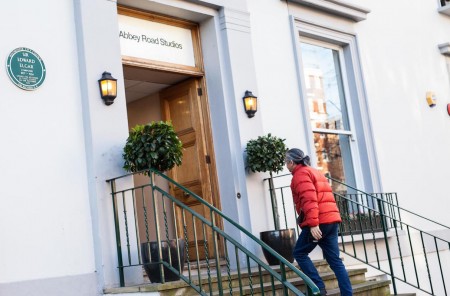
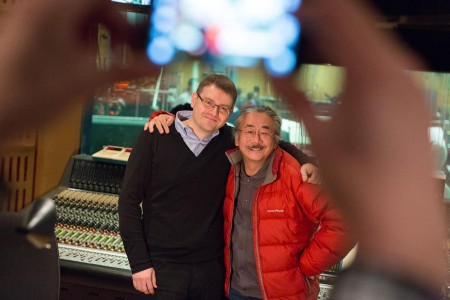
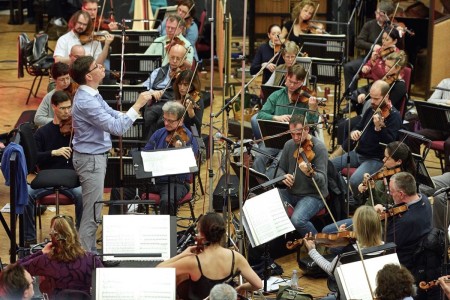
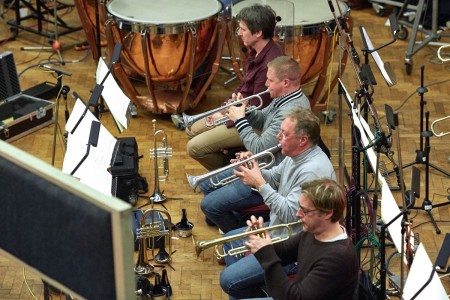
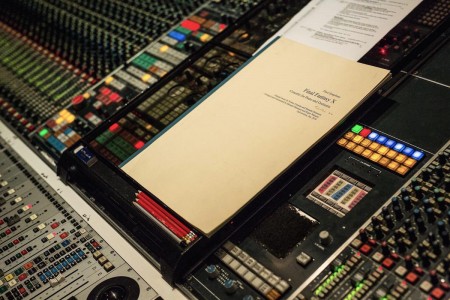
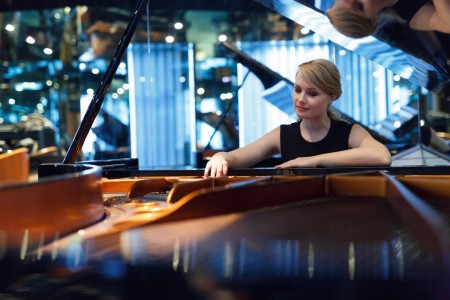
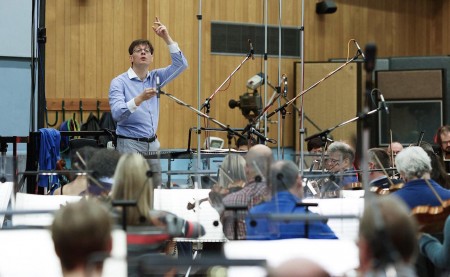
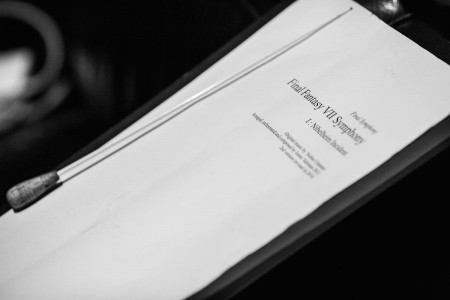
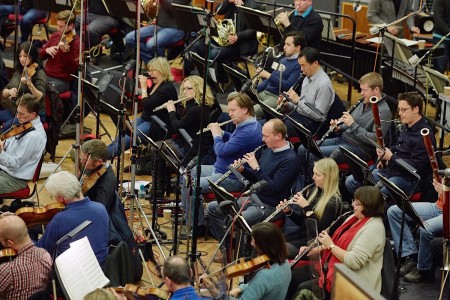
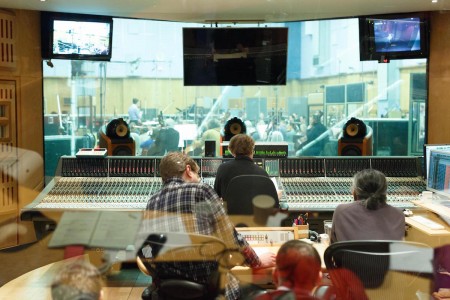
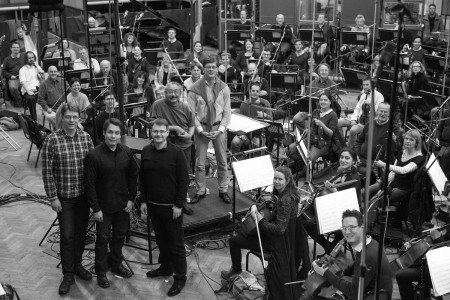
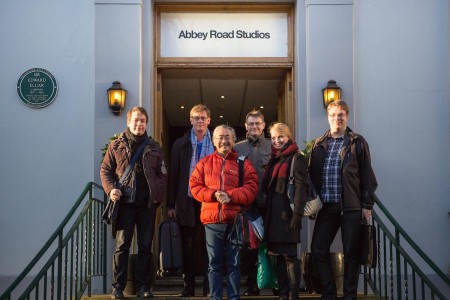













Wonderful review, Joe! I completely agree that this is the best video game orchestral album ever made. I hope they do another Final Symphony concept for the FF series. I would be interested to see what Valtonen and Wanamo would do with IV, VIII, and IX. Or perhaps a Sakimoto only album?
Thanks Josh. I have no idea what they will do next. They have an audience now who are interested in what they do no matter what it is so they could take bigger risks with the games they cover.
I’ve basically been listening to this non-stop and I simply cannot get over it. I’ve been captivated by the RSPO’s performance of the poem, and I’m glad that the LSO recording is just as good and a bit better. There’s plenty of magic to be found in the poem, and it pays the game great tribute.
The concerto is my absolute favourite, and the segment with “The Sending” is incredible. From the offset lead-in to the reproduction of the textures to the intensity built up that bursts into the third movement…it’s almost an overload on my senses. Hamauzu and Wanamo make an amazing pair. “Suteki Da Ne” is also a wonderful encore, and I love the bits taken from the orchestral version of the track. Katharina’s playing is crystal clear and she has great energy. I hope (the chances are basically zero I guess) that I can get a hold of the sheets to learn it one day. Or perhaps my ear will develop enough that I can figure it out myself (even less likely…).
The second movement of the symphony is also great. I’ve never had as visceral of a reaction as I had listening to the end of that movement. What it portrays narratively is not new to me, but the way it was done was so powerful. I felt myself protesting internally at the screeching violins (in a good way)!
I have been looking forward to this since the announcement of the first concert, and the wait was worth it. It definitely deserves each of those stars.